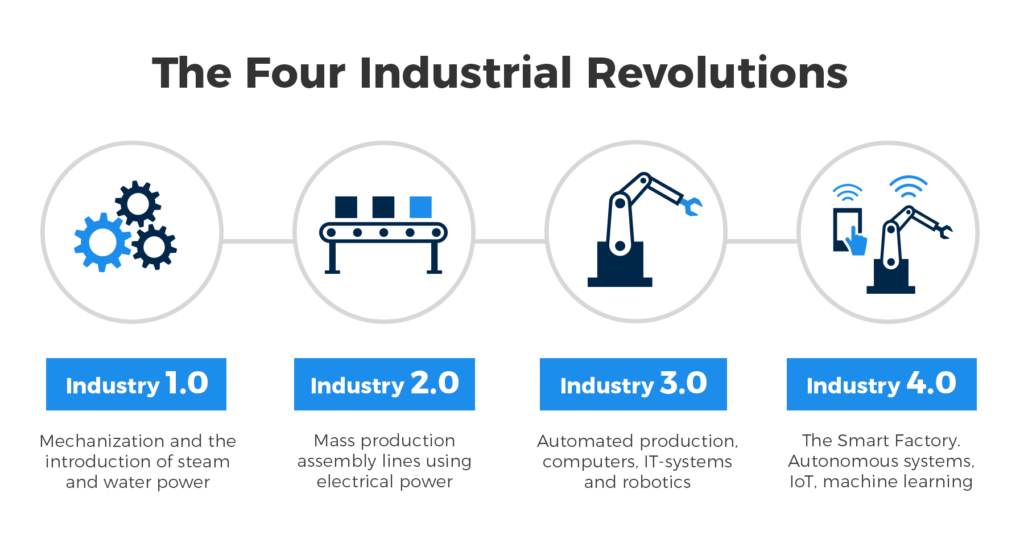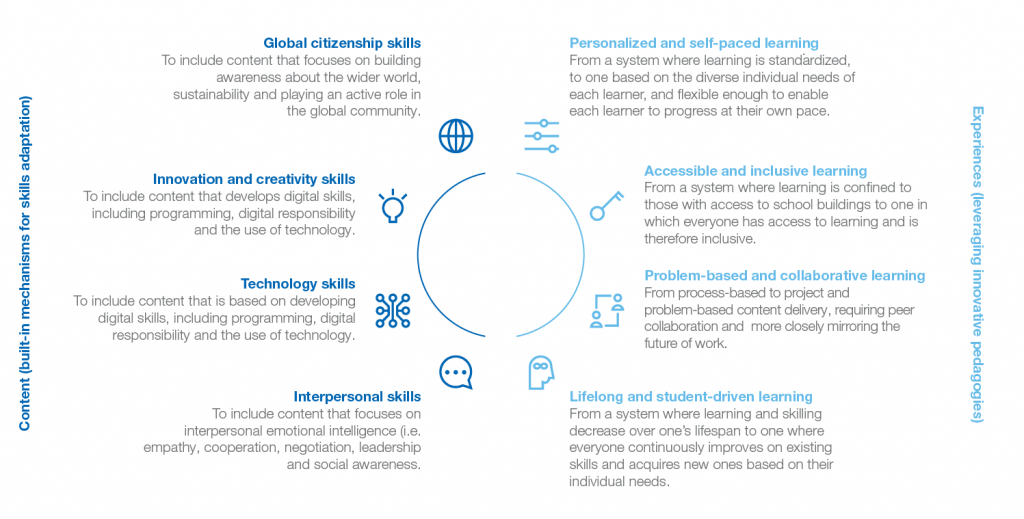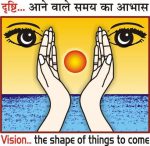A 20 minutes read.
By Vishal P Pandey
Innovation & Research Cell
Why do we go to schools?
In 2007 there came a famous TED talk by Sir Ken Robinson, which went ahead of become one of the most watched TED talk of all time. It was titled “Schools kill creativity“ and in it famous author and educationist Sir Ken Robinson argued that in schools we don’t grow creative, we grow out of it. Or rather we get educated out of it. The talk went ahead to become one of the most watched TED talks of all times!
The question remains relevant as ever , along with numerous other issues we raise about education every now and then, that if schools kill creativity, ‘Why do we send our children to school at all, what all should they learn out there, and how?’
The main reason we send children is because we want them to accumulate knowledge and acquire skills which will allow them to work and progress in life. Let’s face it, we send them to school because we don’t have skills, patience and time to teach them all these things ourselves! Even if we can gain the most improbable expertise required to teach children numerous subjects in a progressive manner ourselves, we have to work for a living.
On question of what they should learn which would be useful for a lifetime, and how this learning is to be imparted, we again feel too helpless or overburdened, or perhaps both. We definitely take time out to criticize the schools at times, or even that occasional visit to chastise the teacher who is not paying sufficient attention. But other than this we are too busy in annual reviews and monthly targets to do much. We leave the sacrosanct job of finalizing intricacies of teaching like syllabus and pedagogy methods for the Government, the Examination Conducting Boards and School Management. After all they are the experts and they definitely know more. Or do they? Are they really the all knowing experts or are they as much in dark as you are? Let’s try to ascertain.
Industrial Revolutions and education models
Our present education model or the standardized model of direct learning widely used in mainstream education today was largely influenced by the needs of the First and Second Industrial Revolutions, when the mass production of uniform talent was used to fill repetitive, process-oriented early manufacturing jobs.
Today we are looking at the Fourth Industrial Revolution. While opinions differ on when exactly this revolution will set in (many argue it has already started), there is no arguing the fact that the world is witnessing rapid changes by emerging technologies which are bound to change the way we work and live.
Industry 4.0 (i4.0) is a collective term used around the world to describe the convergence of IoT-driven technologies, augmented decision making and advanced automation. These next-generation technologies are fundamentally transforming the business. What makes i4.0 so disruptive is that it is the first time an industrial revolution has been predicted rather than observed.
Industry 4.0 explained- KPMG Insights

The bliss of ignorance!
Although most education systems have continued to operate business-as-usual, innovation has driven economies toward new models of productivity. The Third and Fourth Industrial Revolutions introduced production , automation and intangible value creation. These new drivers of growth created massive shifts in the skills required to contribute to the economy and the ways in which people work, raising questions about the adequacy of current education systems in keeping pace with these changes.
The education reforms of Western Europe and England during the 19th century were were supported by capitalists in reaction to the increasing importance of human capital in sustaining their profit rates. In simple words the capitalists brought education system to provide manpower for their industries.
Das Human-Kapital: A Theory of the Demise of the Class Structure; Galor & Moav
While primary school enrollment has seen mass expansion in the last few decades—UNICEF Report of 2019 reveals that more than 90% of primary school-age children worldwide are enrolled in school today —studies suggest that increased access has not necessarily translated into
increased levels of relative social mobility. One key barrier is the quality of learning.
Many of today’s school children will work in new job types that do not yet exist, most of which are likely to have an increased premium on both digital and social-emotional skills. They will be introduced to wholly new business models whose workforces are much more distributed. In an increasingly
interconnected world, future workers will be expected to collaborate with peers residing in various parts of the globe, understand cultural nuances and, in many cases, use digital tools to enable these new types of interactions.
Yet many education systems in developed and developing economies alike still rely heavily on passive forms of learning focused on direct instruction and memorization, rather than interactive methods that promote the critical and individual thinking needed in today’s innovation-driven economy. These outdated systems limit access to the skills needed to drive prosperous economies and pose risks for global productivity. The problem is certainly more serious for a country like India which is demographically amongst the youngest, and where Human Capital is one of the primary assets.
Education cannot be cast aside!
We must remember that Education still remains a vital differentiator at social, and economical level round the world. Education quality, particularly in childhood years, has a significant impact on later life and earnings outcomes. There is strong evidence that education is a key contributor to relative social mobility, the social and economic status of an individual relative to their parents.
At the same time, education systems play a key role in defining the values and norms that enable positive human interaction. In addition to ‘hard’ skills, such as technology design and data analysis, it is crucial that schools also foster human-centric skills—cooperation, empathy, social awareness and global citizenship—that enable children to shape future societies that are inclusive and equitable.
Yet the definition of quality has been largely debated, with additional uncertainty created by new advances in technology. While many technologies have emerged as potential solutions to global education gaps,
technology use is not an end in itself, but rather can serve as a tool to enable new approaches.
It’s a race between education and technologies. Blockchain, AI and advanced biosciences promise new efficiencies and growth opportunities at a time when leading economies are struggling. If skill-building doesn’t catch up with the rate of technological progress, the G20 economies could lose up to US$11.5 trillion in cumulative GDP growth in the next ten years.
IT’S LEARNING.JUST NOT AS WE KNOW IT- Accenture Report
Clearly defining quality learning in the Fourth Industrial Revolution is thus an important first step in setting the direction of innovation in education and reviving it as a pathway to social mobility and inclusion in the future.
Shifts required for 21st Century
In the context of job disruption, demand for new skills and increased socioeconomic polarization, primary and secondary school systems have a critical role to play in preparing the global citizens and workforces of the future. Education models must adapt to equip children with the skills to create a more inclusive, cohesive and productive world.
In a white paper published by the World Economic Forum eight critical characteristics in learning content and learning experiences have been identified to define high-quality learning in the Fourth Industrial Revolution. These are labelled as “Education 4.0”

Shifting learning content in Education 4.0
What students should learn is certainly extremely important. The shift in learning content is required if we earnestly desire to identify promising models of quality education for the Fourth Industrial Revolution; education which will be pivotal in Shaping the Future of the New Economy and Society.
There are four shifts suggested by experts in the learning content of the present day education system
Global citizenship skills
Globalization and Technology has been the core trends right from the start of industrialization. Today these have become most acceptable and a de facto standard norm of working. We have created a more interdependent
world, presenting an opportunity for individual citizens to play
a greater role in being part of the developments around the world and of addressing challenges on a global scale. However this is a completely different theratre which requires different skillset.
Creating future citizens that enable a more cohesive world will require school systems to focus on helping children develop a general awareness about the wider world, an understanding of the interconnectedness of global issues, and their duty and agency in playing an active role in the global community.
New communication technologies like Virtual Reality, Social Media and Cloud can play a pivotal role to enable global citizenship education. Small steps like Virtual classrooms and video conferencing have opened gates to completely new possibilities. We certainly need to incorporate these skills into learning environments through formal and informal mechanisms.
Innovation and creativity skills
Include content that fosters skills required for innovation, including complex problem-solving, analytical thinking, creativity and systems analysis.
Education is sometimes perceived as a sector which is resistant to change, while at the same time it faces a crisis of productivity and efficiency. Innovation could help improve the quality of education, as well as provide more “bang for the buck” in times of budget pressures and rising demand.
Education Innovation and Research- OECD 2019
Technology skills
Technology design and programming are two of the key skills set to be in high demand over the coming years as technology adoption continues to impact business growth. While skilled human capital is a key contributor of technological progress and adoption,25 economies today fall far behind the
new frontier of digital skills demand. To capitalize on the full potential of the Fourth Industrial Revolution, businesses and economies must foster technology skills in the workforce of the future.
Such a shift in learning content would help children develop healthy relationships with technology, understand principles for managing digital risk and security, and build awareness about their duty as responsible developers and consumers of technology.
Technological progress is enabling machines to complete many of the tasks that once required human beings. That new automation revolution will have a major effect on employment in the coming years. Nearly every job will change, many quite profoundly. Preparing for the future of work is one of the defining business problems of our time—yet remains majorly unaddressed.
Building the vital skills for the future of work- McKinsey Report
Interpersonal skills
As technology continues to automate routine tasks, human-centric skills will provide a distinct advantage over machines in the workplace. In fact, employers report leadership, social influence and emotional intelligence to be among the high-demand interpersonal skills of the future.
Fostering these skills can help children develop healthy relationships with others and consider different views, which can complement and augment other skills of the future.
Studies show that developing these non-cognitive skills at an early age can also have a lasting positive impact on individual outcomes in the long term beyond employment, including higher wages, better health and lower chances of being involved in crime.
Shifting learning experiences in Education 4.0
The transition to Education 4.0 will also require learning mechanisms that more closely mirror the future of work, and that take full advantage of the opportunities offered by new learning technologies.
Personalized and self-paced learning
Today’s children are growing up in a world of abundant
choice and personalized experiences enabled by technology. They have on-demand access to the videos and shows
they’d like to watch, friends are one message away, and they
can customize their mobile devices with the applications they
find most useful, listed in the order that is most efficient for
them to access. Same thing is applicable in Work Place where the skills disruption will require organizations to be much more agile in delivering working and learning experiences that are tailored to the individual needs of their workers
Yet even though children will enter workplaces and have
experiences that are more customized and agile than ever before, most education systems continue to take a standardized approach to learning. Shifting to a more personalized and flexible model can not only help schools more closely mirror the realities of work and life outside of school, but it has also proven to show better student outcomes.
We need to realistically move from a system where learning is standardized, to one based on the diverse individual needs of each learner, and flexible enough to enable each learner to progress at their own pace.
Accessible and inclusive learning
We need to move from a system where learning is confined to those with access to school buildings to one in which everyone has access to learning and is therefore inclusive. This problem is specially predominant in developing countries like India with huge difference between public sector, and high end private schools and colleges.
Problem-based and collaborative learning
In traditional standardized learning models, teachers impart direct knowledge to students by demonstrating processes and formulas to arrive at one answer. The issue with this approach is that today’s innovation-driven economy depends on the creation of wholly new ideas, services, products and solutions, and there is no process or formula for doing that. Creativity and innovation cannot be imitated. They require individuals to try solutions and iterate based on how well their design addresses the given challenge. In many cases, there may be multiple solutions and designs that solve the same problem. Such innovation can rarely occur through isolated thinking, and requires children to work on building physical, digital or hybrid solutions together.
To foster this kind of thinking, education systems will need to shift from a process-based, to a problem-based approach to learning. Studies show that this method improves students’ problem-solving skills, as well as their perceptions of the learning environment. It enables children to feel ownership of their learning and creates a stronger sense of community in
the classroom.
Lifelong and student-driven learning
While traditional education systems have been designed to decrease learning with age, a new system must emerge whereby people engage in
lifelong learning to navigate future job disruptions. To realize this vision, a love of learning must be instilled in children from a young age. We urgently need to move from a system where learning and skilling decrease over one’s lifespan to one where everyone continuously improves on existing skills and acquires new ones based on their individual needs.
There is a huge disconnect between current education programmes and the skills that employers need now and in the future. The Education providers need to embrace the future of work as a source of reinvention to normalize lifelong learning for all.
Upskilling for Shared Prosperity- Report by World Economic Forum
Work in progress
NEP 2020 has definitely been a pathbreaker and can start a chain reaction of the must required changes in the education system. However for such efforts to be successful the first focus should be to take the entire education seriously. This calls for a serious introspection by all the concerned parties. Whereas the education providers need to rope in fundamental changes at all levels, the parents must realize and appreciate the humongous problem at hand. They need to value the education providers as well as the education on whole. An urgent scrooge effect needs to settle in when considering education expenses!
References & Further Reading Material
- National Education Policy NEP 2020-English
- राष्ट्रीय शिक्षा नीति 2020 हिंदी- National Education Policy
- World Economic Forum Report: Future of School Education
- Use of Bloom’s Taxonomy in Higher Education
- TED Talk-Do schools kill creativity?
- Industry 4.0 explained- KPMG Insights
- Building the vital skills for the future of work- McKinsey Report
- Upskilling for Shared Prosperity- Report by World Economic Forum
- Das Human-Kapital: A Theory of the Demise of the Class Structure; Galor & Moav
- IT’S LEARNING.JUST NOT AS WE KNOW IT- Accenture Report
- Innovating Education and Educating for Innovation. OECD 2019
- The Scrooge Effect: Evidence That Mortality Salience Increases Prosocial Attitudes and Behavior


Impressed, by the way, article is written and brought real concerning issues on education system.
It is the pressurized system of teaching and being taught which kills creativity . The linking of education with potential of getting more money through employment, has given rise to cut throat competitions . Those left out of it in the process are depressed and those getting the privilege of attaining higher marks or better employment are satisfied enough to subjugate others in society . It has also encouraged cheating in examinations defeating the very purpose of educating to become a responsible citizen to society .
[…] fact as pointed out in the previous article Schools of the Future, the World Economic Forum has identified ‘Global citizenship skills’ as one of the eight […]